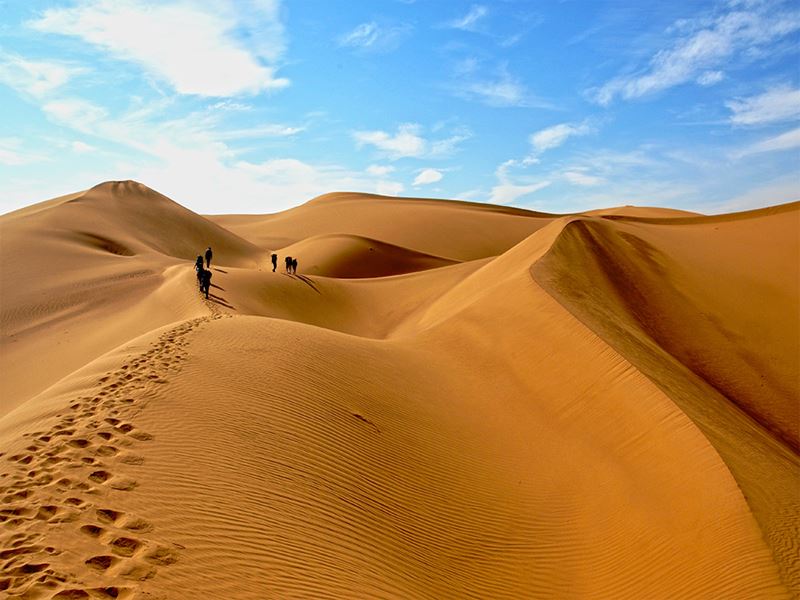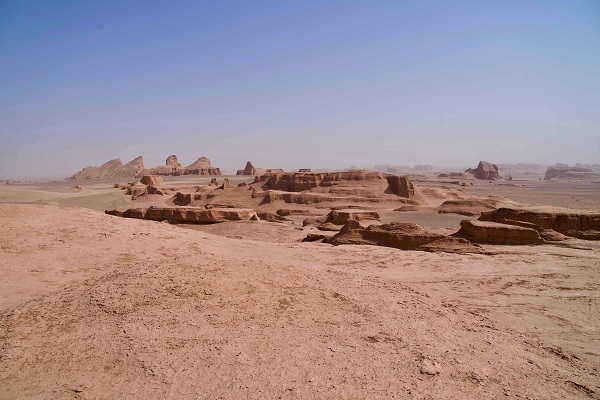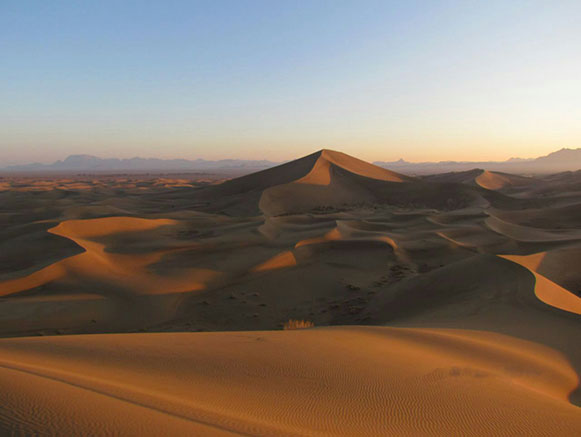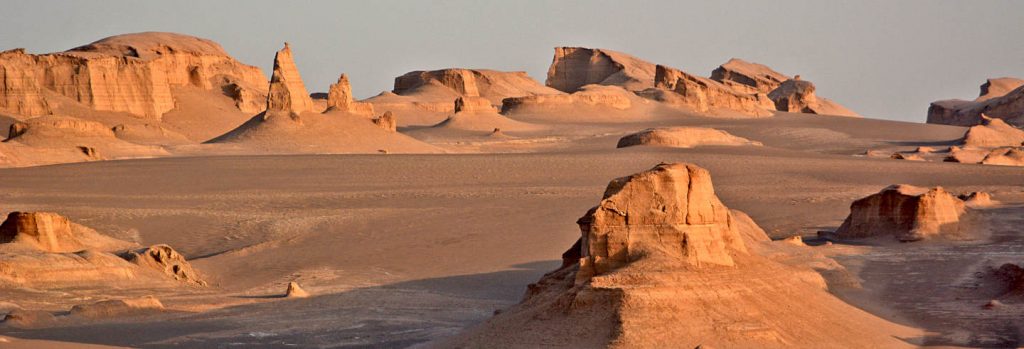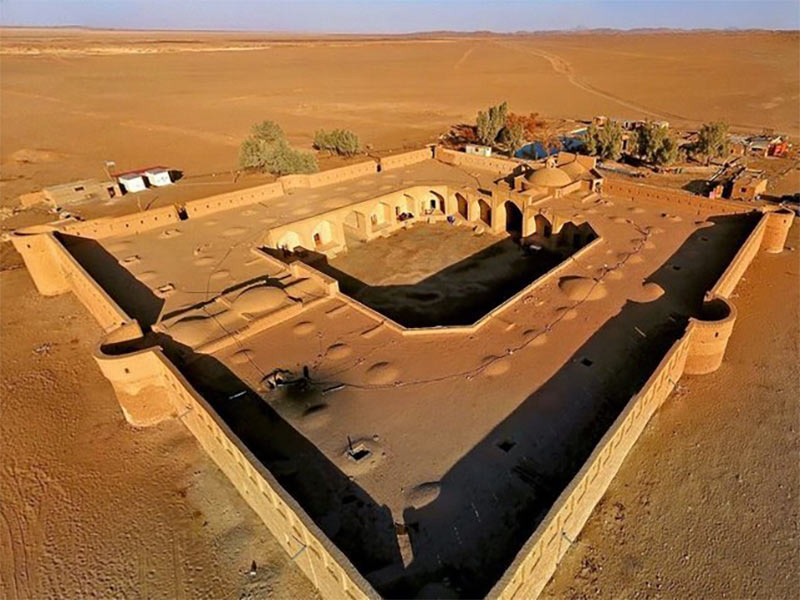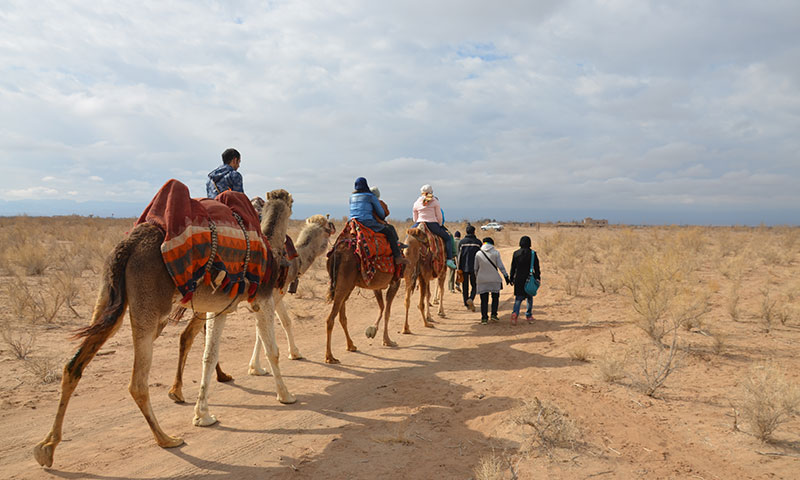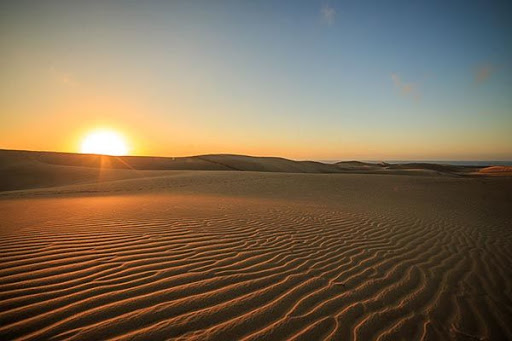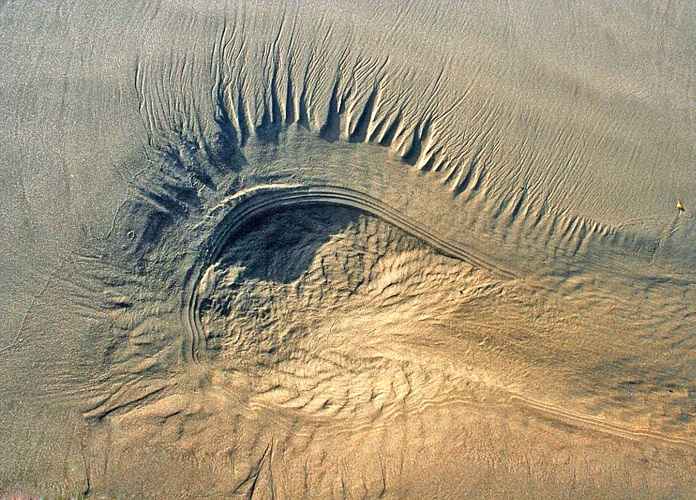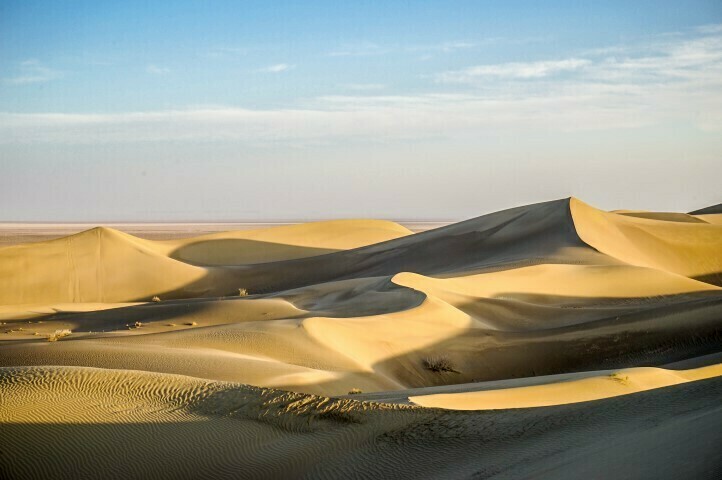Deserts
Iran’s deserts lie on a plateau and are surrounded by interconnected mountain ranges. In the geography of Iran, there are two famous deserts in two major areas: Dasht-e Kavir and Dasht-e Lut, which are among the driest and perhaps the hottest areas in the world.
The largest desert in Iran
Dasht-e Lut is one of the largest deserts on the Iranian plateau and one of the only ones in the world, made up of layers of earth, sand, dunes, and Kalut.
The maximum annual rainfall in this region is about 100 mm and its average height is 600 meters above sea level. Geologically, the other Iranian desert called Dasht-e Kavir is located north of the Lut desert. The minimum height of Dasht-e Kavir is 400 meters above sea level. Most of the desert plain is covered with sand and is exposed to strong winds and storms that move the sand mixed with salt like a wave of the sea. Over time, this phenomenon has led to the rise of high hills that reach up to 40 meters in height.
Environmental conditions of the deserts of Iran
Some of the environmental characteristics of Iranian deserts are intense insolation, relatively low humidity, low rainfall, and high evaporation. The temperature varies as a function of the distance from a point to the heights. In regions far from the heights, temperatures can reach 60 degrees in summer. Average temperatures between January and May are 22 and 40 degrees, respectively. In general, the environmental conditions of Iranian deserts are so harsh that they are not tolerable in either summer or winter.
It rarely snows in this region. Relative humidity is less than 30% per year. In summer, the humidity decreases and sometimes reaches 0%. In winter it rains often and sometimes a lot, eroding the land. As the deserts of Iran are often exposed to the wind, there are not enough plants to protect it and the wind causes erosion. For this reason, the inhabitants use wooden walls and plant bushes and trees to block the wind and fight against the destructive forces of nature.
Conditions of living in the deserts of Iran
Water is always considered a vital element that enables living conditions anywhere, as well as providing suitable conditions for plants to grow and for people to reside in the desert. However, water is not available in all areas of the desert.
Life flows in areas where there is water in springs that are accessed through an ancient underground channeling technique called Kariz. The locals use animals that have a high tolerance to travel and traverse the desert. In the deserts of Iran, most plants have roots deep in the ground to survive.
Housing and clothing in desert areas
Raw clay, raw mud and, in some areas, a limited number of stones are used as building materials for houses. The walls should be thick enough to serve as insulation, and the ceilings should be rounded or arched to last longer. People usually wear light colored cotton clothing. Their clothes are loose and long, and some people wear different clothes due to the influence of urban culture. Although the Iranian plateau imposes its own living conditions, the inhabitants try to maintain them. These hardworking people, who have tried to live in the desert for thousands of years, are more resistant than giving up easily.
How to travel through the desert
If you have not yet traveled through the desert, you should know that this trip is capable of bringing you new experiences and emotions.
By keeping the following points in mind, you will be able to safely travel through the deserts of Iran.
To travel through the desert, you have to walk very slowly, not expending all your energy in the first hours.
Do not eat in abundance during the walks, but make small sandwiches with simple and light but caloric foods, such as dates, dry bread, nuts, etc.
Start exploring the desert in the morning and stay in the shade in the afternoon, except in winter and at low temperatures.
In the case of spending more time in the sun, increase the amount of high protection sunscreen and cover the body with cotton or linen clothing (light colors). It would be preferable not to wear tight pants and shirts to allow the skin to breathe and balance the body temperature according to the level of perspiration.
Cover your head and neck, wear a hat in the shade, and wear sunglasses.
Drink enough water, in small sips and regularly.
Rest between each round and regain energy to continue the journey.
Follow the guide if you are not familiar with the desert. If for any reason you are late and walk slowly, you must notify the guide before getting lost.
Avoid traveling alone in the desert.
Have a map with you and a device to find the route. If your itinerary does not have a suitable camp or is not registered on the map, you will need to carry a tracking device, notify the local police before leaving, or be accompanied by a professional local guide.
Do not enter difficult and unfamiliar areas without a guide and a map during your first experiences in the desert.
Take the necessary precautions against animals that live in the desert.
During the second half of the year, the desert experiences its most pleasant and mild days. But the nights are cold, so you have to wear appropriate clothing for this time of year.


